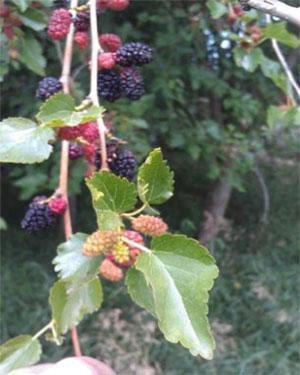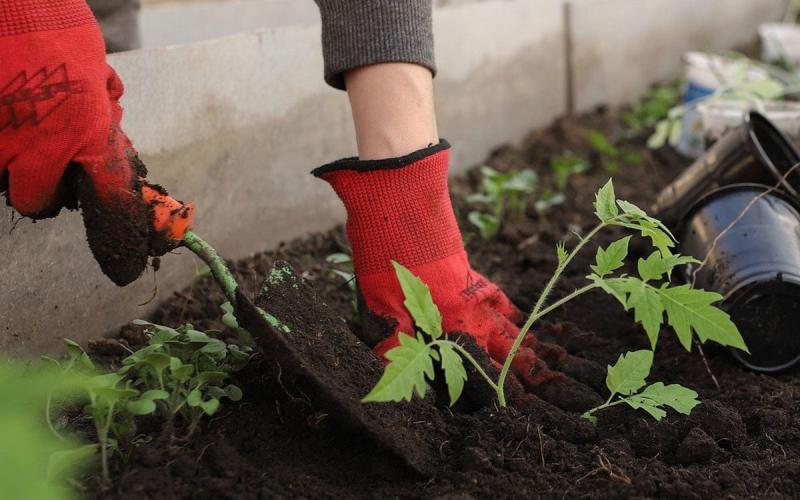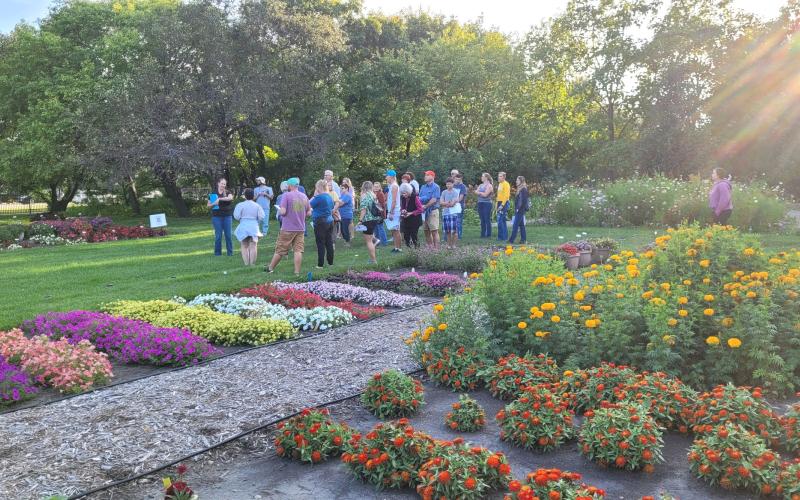About Mulberry Trees

Every year about this time I received a few samples of Mulberry Trees (Morus alba) and usually the Tartarian (Russian) variety (Morus alba var tatarica). This is a very common tree in South Dakota, not so much from being planted by people but from birds. The tree, which can become more than 30 feet tall in our state, has three different leaf shapes, unlobed, one lobe (like a mitten) or even two lobes and all three leaf shapes can occur on the same tree, much to the puzzlement of the person trying to identify the plant.
Fruit
The reason I receive samples during late July is the fruit that is beginning to ripen. The fruit is a purplish-violet multiple achene about ½ inches long that resembles a blackberry. The fruit is not as flavorful and while it can be made into jams and wines, most folks leave the fruit to the birds who deposit the seeds everywhere.


